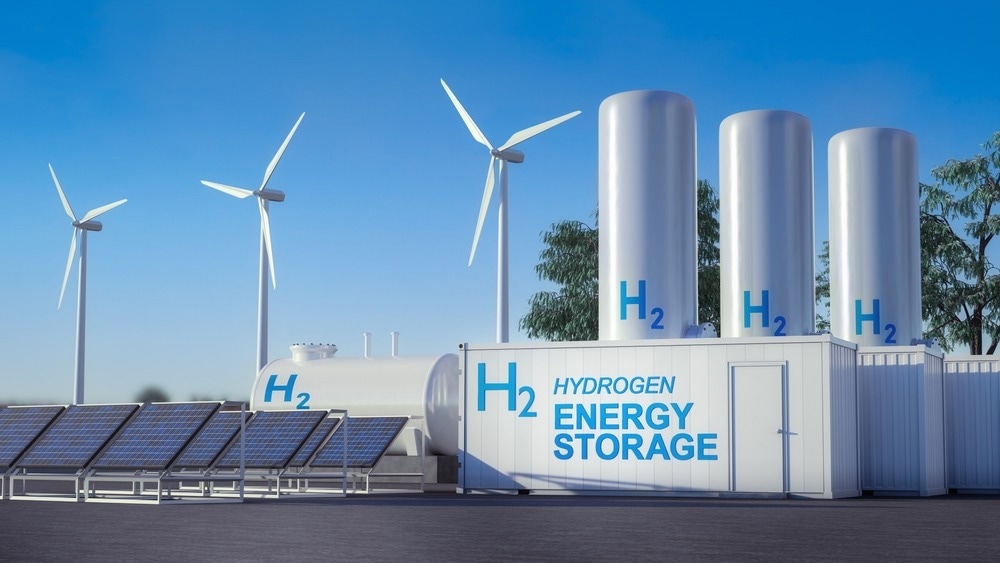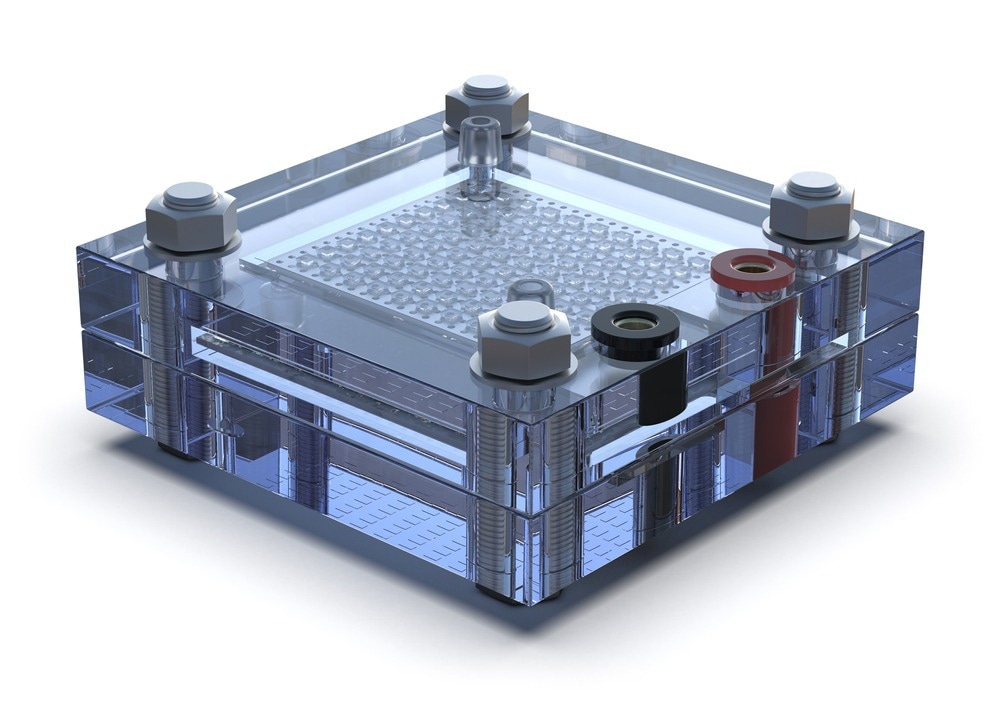Hydrogen has emerged as a promising alternative energy carrier for sustainable energy solutions. The widespread adoption of hydrogen as a clean energy source faces numerous challenges, including storage, transportation, and production efficiency. This article discusses the role of graphene in transforming the hydrogen industry, paving the way for a greener and more sustainable future.

Image Credit: Sahara Prince/Shutterstock.com
What is Graphene?
Graphene is a single layer of carbon atoms arranged in a two-dimensional honeycomb lattice, making it the basic structural element of other carbon allotropes like graphite, carbon nanotubes, and fullerenes. Its remarkable properties include exceptional electrical conductivity, thermal conductivity, and mechanical strength.
Applications of Graphene in the Hydrogen Sector
Graphene's extraordinary electrical, thermal, and mechanical properties in the hydrogen sector open doors to diverse applications. For instance, it exhibits potential in hydrogen storage, benefiting from its high surface area and robust mechanical strength, offering an ideal platform for hydrogen adsorbing. Moreover, graphene-based catalysts enhance the efficiency of hydrogen production processes like electrolysis and methane reforming, making them more energy-efficient. Researchers are continuously working on graphene's application in the hydrogen sector, and some of the recent developments are considered a decent step in its advancement.
Recent Developments
Graphene Boosts Hydrogen Cost-Efficiency
A recent study published in 2023 explores the use of graphene in the hydrogen industry by conducting density functional theory calculations. The research highlights that localized strain in graphene significantly enhances proton conductivity, particularly in regions with strain-induced morphological features like wrinkles and ripples. These findings demonstrate that graphene, typically considered a flat crystal, can benefit from strain and curvature to improve proton transport.
The study outlines methods for device fabrication and discusses the consistency of meniscus-surface wetting during scanning electrochemical cell microscopy scans. It also confirms the absence of lattice defects in mechanically exfoliated 2D membranes. These insights have implications for proton-conducting materials in hydrogen-related applications and can lead to the development of low-cost catalysts for hydrogen-related technologies.
Graphene for Hydrogen Storage
One of the most critical challenges in the hydrogen industry is efficient and safe hydrogen storage. Graphene has emerged as a game-changer in this regard due to its high surface area and tunable porosity, making it an ideal candidate for hydrogen adsorption.
A 2021 study explores the challenges and potential solutions for hydrogen storage, emphasizing the importance of safe, reliable, and efficient hydrogen storage methods. It also highlighted the significance of storage solutions for both stationary and mobile applications.
The research focuses on carbon-based materials, including graphene, as promising candidates for efficient hydrogen storage. It discusses various carbon materials such as fullerenes, carbon nanotubes (CNTs), and activated carbon, along with their hydrogen storage capabilities and limitations. The study also delves into the specific use of graphene in hydrogen storage, examining its properties and the various ways it can be employed in this context. Graphene's potential to enhance hydrogen sorption and desorption processes is discussed, highlighting the synergy between hydrogen chemisorption and physisorption.

Image Credit: Peter Sobolev/Shutterstock.com
Graphene in Fuel Cells
Hydrogen fuel cells are a key component of the hydrogen economy, as they convert hydrogen into electricity, emitting only water as a byproduct. Graphene has the potential to address issues related to conventional hydrogen fuel cells, such as cost, durability and performance, as well as advancing the commercial viability of fuel cells.
Applications of graphene in the hydrogen industry, specifically graphene-based hydrogen storage systems, graphene-based membranes for hydrogen purification and concentration, and the use of graphene in electrocatalytic layers of polymer electrolyte membrane fuel cells, are discussed in a 2020 study. It discusses how graphene's unique properties enable high-capacity, stable hydrogen storage, efficient gas separation, and improved electrocatalysis, making it a promising material for advancing environmentally friendly hydrogen energy technologies.
Hydrogen Isotope Separation using Chemical Vapor Deposition (CVD) Graphene
In a 2017 breakthrough study, scientists have devised a scalable approach utilizing chemical vapor deposition (CVD) graphene to separate hydrogen isotopes, specifically protons and deuterons, within the hydrogen industry. This pioneering technology boasts remarkable energy efficiency and the potential to revolutionize heavy-water production and tritium separation, offering a more sustainable and economically viable alternative to existing methods. With its environmentally friendly attributes and the possibility of large-scale implementation, graphene-based separation holds tremendous promise for advancing the hydrogen industry's critical applications.
Conclusion and Future Prospects
In conclusion, graphene's exceptional properties have the potential to revolutionize the hydrogen sector, addressing critical challenges in storage, production, and transportation. Recent developments highlight its role in enhancing proton conductivity, reducing costs, and improving hydrogen storage efficiency. Graphene-based materials offer promise in fuel cell technology, with the potential to advance the commercial viability of clean energy solutions.
Additionally, groundbreaking research utilizing chemical vapor deposition graphene for hydrogen isotope separation presents a sustainable alternative for heavy-water production. While these advancements signify significant progress, the journey towards a greener and more sustainable hydrogen industry continues. Continued research, innovation, and scalability are essential to fully unlock graphene's potential, contributing to a cleaner, more sustainable energy future.
References and Further Reading
Alekseeva, O. K., et al. (2020). Graphene and graphene-like materials for hydrogen energy. Nanotechnologies in Russia. Available at: https://link.springer.com/article/10.1134/s1995078020030027
Jastrzębski, K., & Kula, P. (2021). Emerging technology for a green, sustainable energy-promising materials for hydrogen storage, from nanotubes to graphene—a review. Materials. Available at: https://www.mdpi.com/1996-1944/14/10/2499
Lozada-Hidalgo, M., et al. (2017). Scalable and efficient separation of hydrogen isotopes using graphene-based electrochemical pumping. Nature communications. Available at: https://www.nature.com/articles/ncomms15215
Wahab, O. J., et al. (2023). Proton transport through nanoscale corrugations in two-dimensional crystals. arXiv preprint arXiv. Available at: https://www.nature.com/articles/s41586-023-06247-6
Disclaimer: The views expressed here are those of the author expressed in their private capacity and do not necessarily represent the views of AZoM.com Limited T/A AZoNetwork the owner and operator of this website. This disclaimer forms part of the Terms and conditions of use of this website.